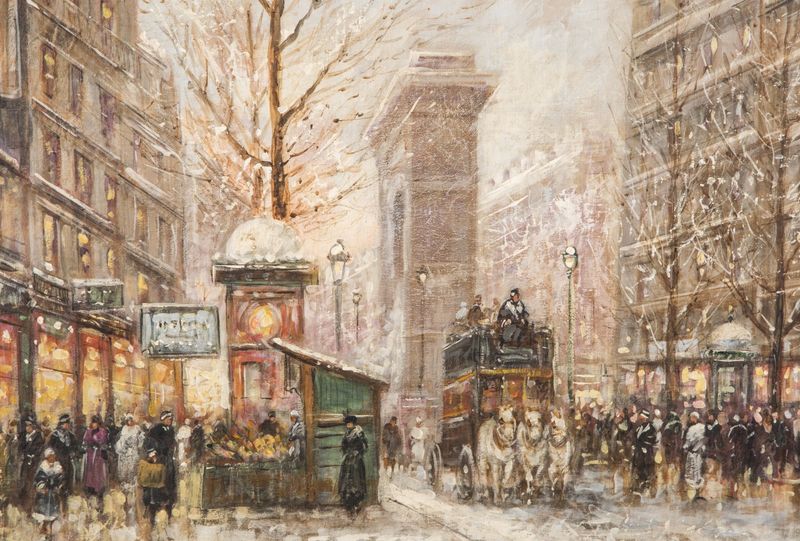The 10th arrondissement: Canal St. Martin - République
- Carsten Sprotte
- Jan 5, 2024
- 3 min read
Updated: Jan 6, 2024
Ethnic, Entrepreneurial, Exciting

Maybe the 10th lacks prestige, but is it really the “armpit” arrondissement many would like to think it is?
It’s taken me a while to come around to the 10th myself, after twenty years of living in Paris.
Three of my clients have now settled in the 10th, and that process has led me to rethink my own prejudices. Two things have recently struck me about the 10th: the beauty of its architecture (in contrast to its disrepute), and the vibrancy of its renewal.
Starting in the 1780s, the southern part of the 10th was prized by wealthy Parisians, who built several private mansions (hôtels particulier), including the Hôtel Bourienne, the Hôtel Benoist-de-Saint-Paulle, and the Hotel de Botterel-Quintin.
The 1820s gave rise to the Place Franz Liszt, with the Eglise Saint-Vincent-de-Paul as its focal point. Without a doubt, this was originally a prestigious neighborhood, and the bones remain for its rehabilitation as such. During the Haussmann period, the grandiose Gard du Nord and Gare de l’Est were built, and remain remarkable edifices even though their immediate surroundings became mal fréquentés in the 20th century. The Canal St. Martin was also in its time a major supply artery, in addition to sourcing drinking water from a spring located 100km to the northeast of Paris. The Mairie (town hall) was built in the 1890s, offering a splendid neo-Renaissance facade to those who bother to raise their eyes.
The Boulevards Magenta and Strasbourg remain exemplary Haussman works, as does also the entire tree-lined block of 64 to 72, rue Louis Blanc on the north side of the arrondissement. The buildings even remain in good condition, but the problem (for most) is that there are hardly any other vestiges of French culture. The entire neighborhood is Indian, which is thrilling when you want to go out for Indian cuisine, but that is not a daily routine except for those who have adopted Indian culture as their own. The most well-known street for Indian food is the Passage Brady, also in the 10th.
The 10th is decidedly ethnic and foody. The lower end of the Rue du Faubourg Saint-Denis boasts the largest concentration of Turkish restaurants, but also a joyous offering of other cuisines, including the iconic French brasserie, Bouillon Julien. Even more iconic according to TasteAtlas is the Bouillon Chartier, which was ranked the 27th most "legendary" place to eat in the world. Bouillon is translated broth, and you can certainly order a broth...but not only.
On the far east side of the arrondissement, there’s a well-known Cambodian restaurant “Le Petit Cambodge” and a tiny but authentic Vietnamese restaurant “Rouge Do” on Rue Saint-Marthe.
Much less common in Paris, the 10th offers several tasty Mexican Taquerias, such as Distrito Frances, El Guacamole, and El Nopal.
I won't go on and on about the culinary 10th, especially since it's changing all the time. Rest assured it won't leave you bored.
One mustn't brush a portrait of the 10th without mentioning its theaters, of which there are more than 10! The most opulent of these is the Théatre de la Rennaissance.
My qualm with living in the 10th is its lack of green spaces. The Canal Saint-Martin (due for some major improvements in 2024) is an interesting place to walk, but doesn't meet my criteria for a green space. The neighboring Jardin Villemin is as close as you get to that, but it's too small given the local population density. The best you can do is head to the Buttes-Chaumont, or the Tuilleries (if you're on the south end). Note that by the end of 2025, the Place Colonel Fabien is set to be transformed into a mini-forest.
On the south side, you might as well consider yourself to be a part of an extended 3rd arrondissement, quite the rage for the past 15 years. In all truth, there are spots in the 10th that are intrinsically more attractive than certain spots in the 3rd. I could amaze you by juxtaposing some photos. It also remains true that there are spots in the 10th that you'd just as soon forget. To simplify, those spots are north of the train stations where the great expanse of tracks carves out a no-man's zone so close to the heart of the city. Sadly, this is what you first see when you arrive into Paris on the train, or even on the RER from the airport. It is indeed the armpit of Paris.
The moral of this story is that we should give the 10th another chance and some more time. Unlike the 6th (a pricey polar opposite where nothing will ever change), the 10th is hoppin'!
See descriptions of other Paris arrondissements here.



